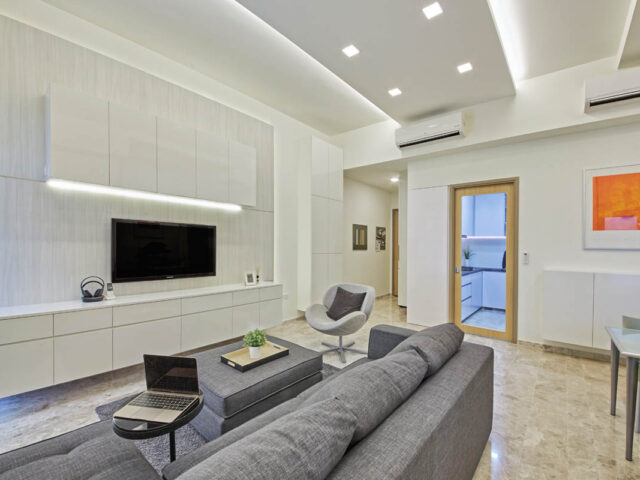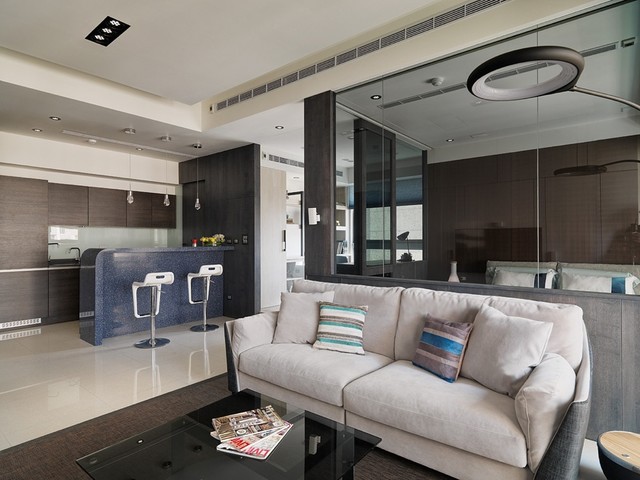
Selecting the right paint colors for your condo can transform your living space, making it more vibrant, cozy, and reflective of your personality. The process may seem daunting, but with a bit of planning and understanding of color theory, you can achieve a stunning result that enhances your home’s aesthetic appeal and functionality. This guide will help you navigate the choices and find the perfect hues for your condo. If you found this article interesting about condos, it is very likely you will enjoy further reading at https://www.thechuanpark-condo.com.sg/.
Understanding Color Psychology
Color psychology is the study of how colors affect our emotions and behaviors. When choosing paint colors for your condo, it’s essential to consider the mood you want to create in each room.
- Living Room: This is a social space where you entertain guests and relax with family. Warm colors like reds, oranges, and yellows can create a welcoming and energetic atmosphere. Alternatively, cool colors like blues and greens can make the room feel calm and serene.
- Bedroom: Your bedroom should be a sanctuary, promoting rest and relaxation. Soft, muted colors like pastel blues, greens, and lavenders are excellent choices. These colors are known to reduce stress and improve sleep quality.
- Kitchen: The kitchen is often the heart of the home. Bright, cheerful colors like yellow and red can stimulate appetite and conversation. However, if you prefer a modern look, neutral tones like white, gray, and beige can provide a clean and sophisticated feel.
- Bathroom: For a spa-like experience, consider using soft blues, greens, or even white. These colors evoke cleanliness and tranquility.
- Home Office: To boost productivity, opt for colors like green and blue, which can enhance focus and creativity. Avoid overly bright or dark colors that might cause strain or distraction.
Analyzing Light and Space
Lighting and space play crucial roles in how paint colors appear in your condo. Natural and artificial light can significantly alter the perception of a color.
- Natural Light: Rooms with abundant natural light can handle darker and more saturated colors. However, in rooms with limited natural light, lighter shades can help brighten the space.
- Artificial Light: The type of artificial lighting (incandescent, fluorescent, or LED) can affect how colors look. Warm lighting enhances warm colors, while cool lighting can make colors appear sharper and more vibrant.
- Room Size: Light colors can make small rooms feel larger and more open, while dark colors can make large rooms feel cozier and more intimate.
Coordinating Colors
A cohesive color scheme throughout your condo ensures a harmonious flow from room to room. Here are some strategies to achieve a balanced look:
- Monochromatic Scheme: This involves using different shades of the same color. It’s a simple yet elegant way to create a cohesive look. For example, you can use various shades of blue throughout your condo.
- Analogous Scheme: This scheme uses colors that are next to each other on the color wheel. It offers a bit more variety while maintaining harmony. For instance, combining greens and blues can create a refreshing and tranquil environment.
- Complementary Scheme: This involves using colors opposite each other on the color wheel, such as blue and orange or red and green. This approach adds vibrancy and contrast but should be used thoughtfully to avoid overwhelming the space.
- Neutral Scheme: Neutrals like white, gray, beige, and taupe provide a versatile backdrop that can be easily updated with accessories and accent pieces. This is a great option if you prefer a timeless and adaptable aesthetic.

Practical Tips for Choosing Paint Colors
- Test Samples: Before committing to a color, purchase small samples and paint swatches on your walls. Observe them at different times of the day to see how they look under varying lighting conditions.
- Consider the Finish: The finish of the paint can affect its appearance and durability. Matte finishes offer a subtle, non-reflective look, while glossy finishes are more reflective and easier to clean but can highlight imperfections.
- Match with Furnishings: Ensure your chosen colors complement your existing furniture, artwork, and decor. Consider the overall style of your condo and select colors that enhance its theme.
- Start Small: If you’re unsure about a bold color choice, start with a small area like an accent wall or a hallway. This allows you to test the impact without committing to a large space.
- Use Color Tools: Many paint brands offer online tools and apps that allow you to visualize different colors in your space. These tools can be incredibly helpful in narrowing down your options.
Popular Paint Colors for Condos
While personal preference plays a significant role in color selection, some hues are universally popular for condos due to their versatility and appeal.
- Gray: A versatile neutral that can be both warm and cool, making it suitable for any room. It pairs well with a variety of colors and styles.
- White: A classic choice that can make spaces feel larger and brighter. It’s perfect for creating a clean, modern look.
- Blue: A calming color that works well in bedrooms, bathrooms, and living rooms. Lighter shades like sky blue can make a space feel airy, while darker shades like navy add sophistication.
- Green: Associated with nature, green brings a sense of tranquility and freshness. It’s ideal for bedrooms and home offices.
- Beige: A warm neutral that adds coziness and pairs well with other colors. It’s a great option for living rooms and bedrooms.
- Yellow: A cheerful color that can brighten up kitchens and dining areas. Soft, buttery shades are more subtle, while bold yellows add energy.
- Taupe: A warm, earthy neutral that provides a sophisticated backdrop. It’s a good choice for living rooms and hallways.
Conclusion
Choosing the perfect paint colors for your condo involves understanding color psychology, considering the effects of light and space, coordinating colors, and testing samples. By following these guidelines and trusting your instincts, you can create a beautiful, personalized living space that reflects your style and enhances your home’s ambiance.
